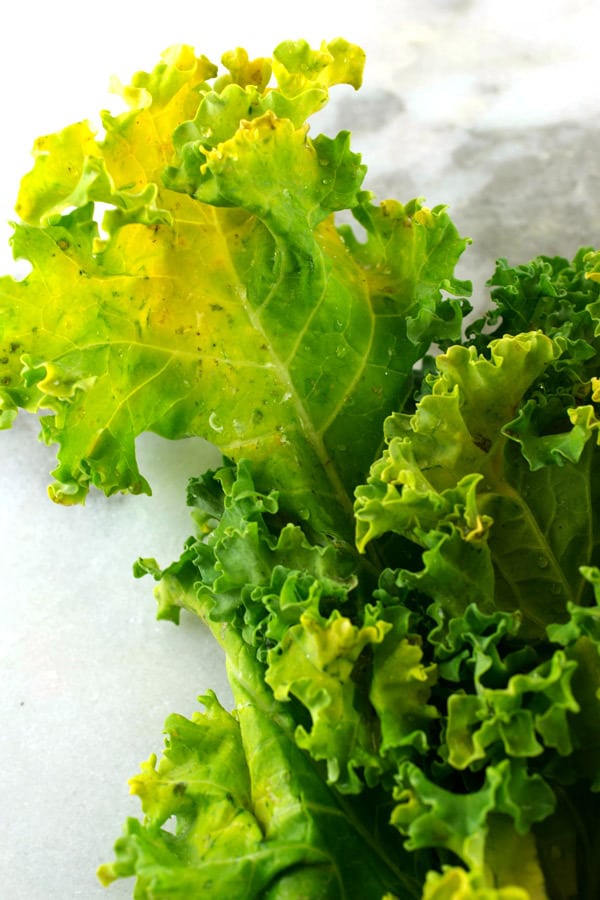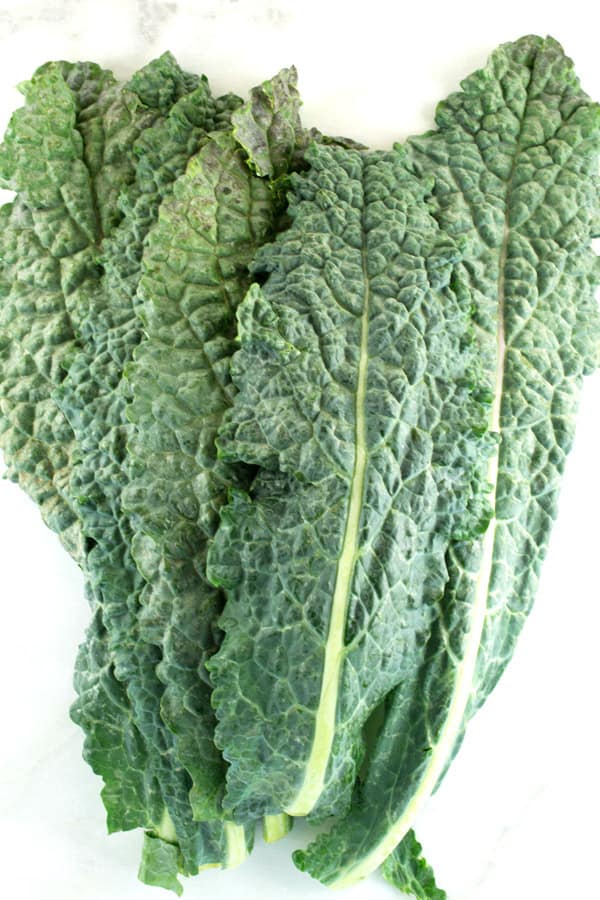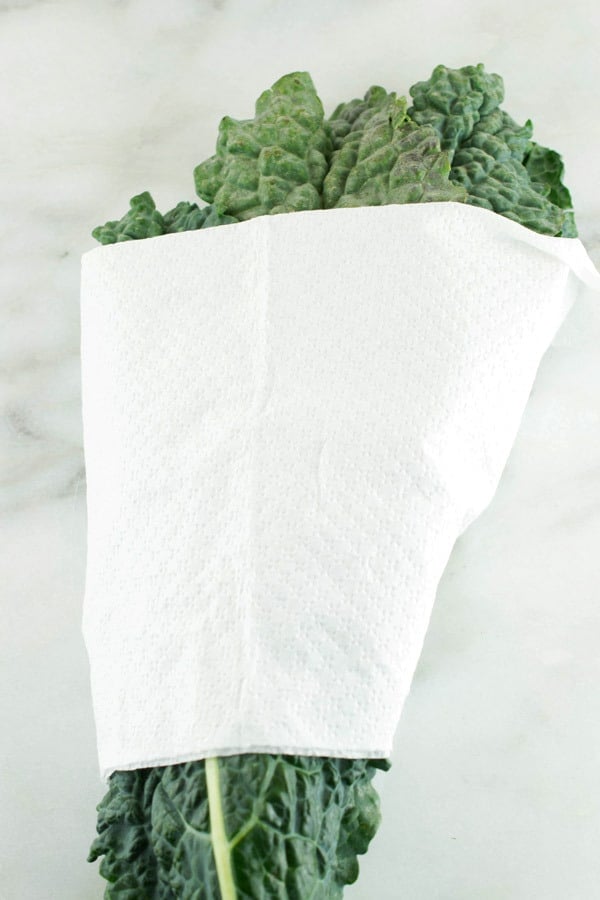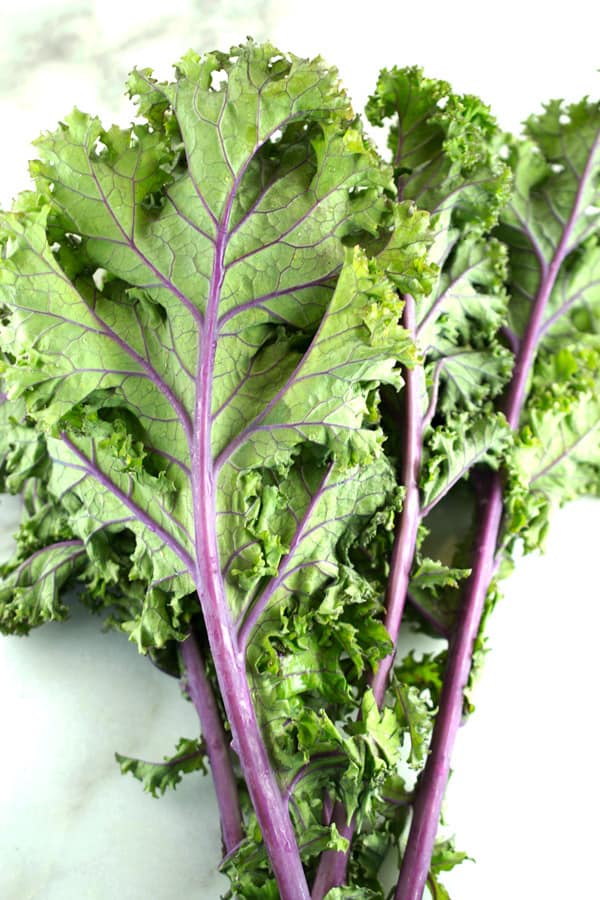What is kale? Don't be intimidated by kale if you have never tried it. Discover the taste, color, and texture of many kale varieties. Explore kale flavor pairings and learn why eating kale is the healthiest thing you can do today.

What is kale? Everyone is talking 'kale' -- fitness experts, celebrities, and popular chefs. But for people who have never tried kale before, buying the first bunch and preparing your first kale dish can be daunting. When you know how to cut and cook kale, it is easy to eat kale a few times per week.
Although kale is a leafy green, it is much heartier than lettuce. It has strong leaves, similar in strength to cabbage leaves. Kale comes in a variety of shapes, textures, and colors. Some leaves are soft and tender, but most are large and tough -- sometimes even coarse.
However, don't let the leaf size and tough texture scare you. Eating kale is one of the healthiest things you can do this week. Per calorie, kale has more iron than beef and more calcium than milk.¹ Kale is rich in antioxidants, fiber, and glucosinolates (phytochemicals that reduce the risk of cancer). What more could you ask for in a power food?
What is Kale: Essential Facts
Kale is a wholesome, hearty, leafy green with a long stem. It is from the nutrient-rich, often intimidating Brassica family (sometimes called crucifers). It is cousins with cabbage and kale's leaves can be as tough as cabbage.

There are two types of kale. Brassica napus (curly and ruffled leaf varieties such as Siberian kale or Red Russian kale) and Brassica oleracea (smoother leaf varieties such as Lacinto or Dinosaur kale).
Mature kale has a thick stem and thicker veins or ribs than other leafy greens. In fact, thirty percent of kale’s weight is in the stem and ribs. These thick stems and ribs intimidate the faint of heart and virtually all children.
Most chefs remove the thick stem before preparing a kale recipe. If you are going to eat the stem, cook it well for best results. The stem will not soften.
What Does Kale Taste Like
- Kale has a strong and earthy taste. The leaves are dry, tough, crunchy, and strong tasting. It is a hearty leafy green, yet it is not spicy like arugula. Young kale has softer, thinner leaves with a mild taste.
- The taste of raw young or very fresh kale is mild. Cut mature kale in small ribbons and blend with lettuce in a salad. Young and fresh kale can also stand on their own in a salad.

- You can buy young kale leaves in plastic clam shell containers. My daughter loves to mix young kale leaves with hummus or refried beans for lunch.

- Red Russian kale tastes sweeter than the other kale varieties. And interestingly, kale that has been growing through a frost tastes sweeter than kale grown where there has been no frost.
- Old kale can taste bitter and have tougher leaves. For best results, cook old kale before eating it.
What is Kale Leaf Color?: Depending on the variety, kale can be dark green, medium green, or purple.

The leaves also vary based on the variety. They can be curly or straight and have ruffled edges or puckered leaves.

What is Kale Season
Because kale is hearty, it can grow year round in many places. It is easy to find in grocery stores and farmers markets alike. However, the actual kale season is usually colder months from October to March. It is hearty enough to last through cold winters, even with frost and snow on the ground. This makes it a good crop for home gardeners during winter when many other plants would not survive in the cold.
How to Choose Kale

- Healthy kale has strong, crisp leaves and should look fresh and vibrant. Young kale has smaller, moist and fresh leaves.

- Avoid kale that have yellow leaves or have brown spots. Do not buy kale that is wilted, droopy, slimy, or extremely tough.
How to Store Kale
Store kale as you would other leafy greens.
- Remove any ties or bands from the leaves.

- Add a paper towel to absorb excess moisture.

- Store kale in a plastic bag in the refrigerator.

- Use kale within 2 to 3 days of purchase for a mild non-bitter taste.
Common Kale Varieties
- Curly Kale: The leaves are blue green when fresh and as the name suggests, they are curly. Very curly. This is a tough kale to eat unless the leaves are cut in small pieces and/or the curly kale is cooked.

- Red Russian Kale (also known as Ragged Jack): The leaves are green-gray with rich purple colored veins and stems. It is a beautiful kale to grow in a garden. The leaves turn a dark green when they are cooked. In my experience, younger leaves taste better and Red Russian kale that is too old is the bitterest kale variety I have personally tasted.

- Tuscan Kale (also known as Lacinto, Nero or Dinosaur kale): The leaves are puckered and can grow up to 2 feet long. This variety is very prolific and can produce leaves weekly. It is hardy and can produce in the heat and throughout winter. It has a mild flavor, making it ideal for raw salads. People usually like the taste and report an even better taste when harvesting it after a frost.

What is Kale Paired With?
Use kale with other leafy greens in salads. The varying tastes and textures of several greens (Romaine lettuce, spinach, arugula, and kale) are not only packed with nutrition, they also offer a unique blending of flavors.
Kale tastes great paired with other ingredients. Some of the most popular pairings are:
- Olive oil + kale
- Garlic + kale
- Spinach + kale
- Sausage + kale
- White beans + kale
- Black beans + kale
- Quinoa + kale
- Chicken + kale
Kale Recipes






Comments
No Comments